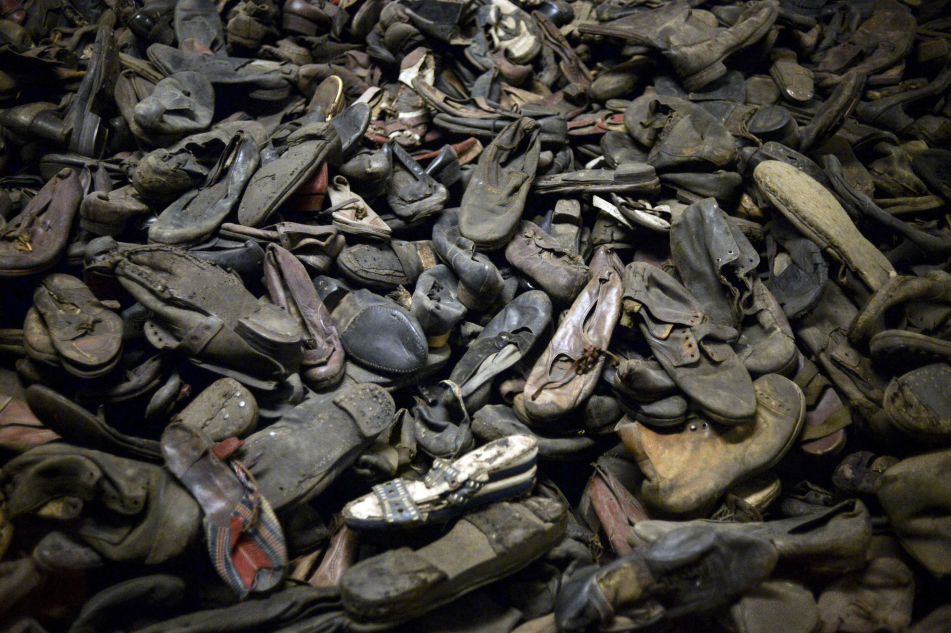By mid-April 1946, the defendants were still trying to deny the fact of the mass extermination of people in concentration camps. According to them, it was all propaganda and exaggeration. But eventually, a man came to the podium and bluntly stated that he himself had sent 2.5 million prisoners to death and he had personally implemented the “final solution to the Jewish question”. This was Rudolf Höss, commandant of Auschwitz. Let's try to consider the commandants of the Nazi concentration camps in depth and analyse the people whose official duty was to organise torture and mass murder.
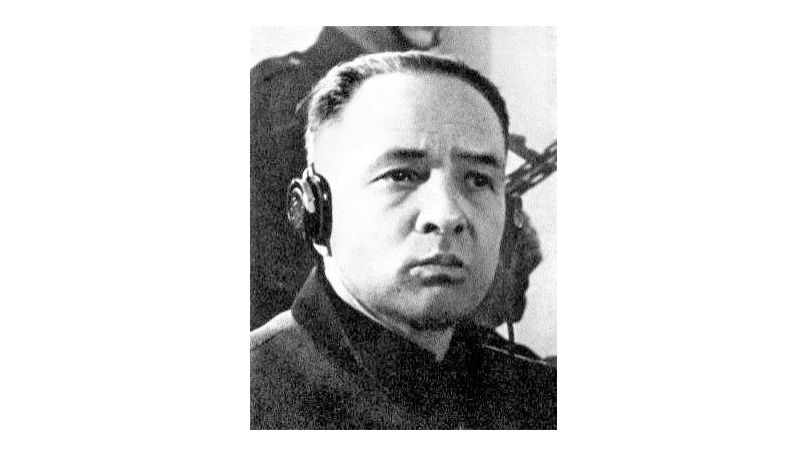
Dr Kauffmann: [Turning to the witness] From 1940 to 1943, you were the commander of the camp at Auschwitz. Is that true?
Höss: Yes.
Dr Kauffmann: And during that time, hundreds of thousands of human beings were sent to their death there. Is that correct?
Höss: Yes.
Dr Kauffmann: Is it true that you, yourself, made no exact notes regarding the figures of the number of those victims because you were forbidden to make them?
Höss: Yes, that is correct.
Dr Kauffmann: Is it furthermore correct that exclusively one man by the name of Eichmann had notes about this, the man who had the task of organising and assembling these people?
Höss: Yes.
Dr Kauffmann: Is it furthermore true that Eichmann stated to you that at Auschwitz a total sum of more than two million Jews had been destroyed?
Höss: Yes.
Dr Kauffmann: Men, women, and children?
Höss: Yes.
***
Rudolf Höss was not a sadist, unlike the first Buchenwald Commandant Karl Otto Koch, who ordered to behead a Polish prisoner and make a paperweight out of his head. Koch's deeds shocked the imagination even of the SS authorities, and in early 1945 the ex-commandant was tried and executed. His wife, the famous "Witch of Buchenwald" Ilse Koch, hung herself in prison in 1967.
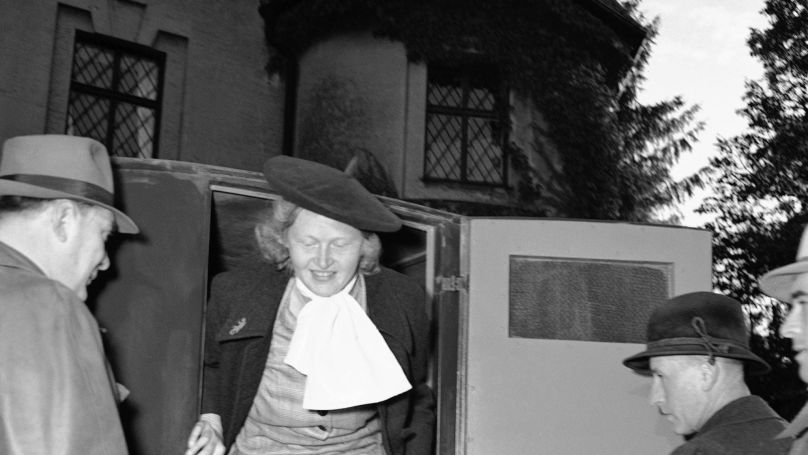
Höss was different from the first commandant of Dachau, Hilmar Väckerle, who terrorised prisoners and organised the murder of some prisoners by another (this was back in 1933), for which he lost his post and was put on trial.
Höss didn't like to kill people himself and did so only when duty demanded. He wrote in his autobiography the following:
“On one occasion, two small children were so absorbed in some game that they quite refused to let their mother tear them away from it. Even the Jews of the Special Detachment were reluctant to pick the children up. The imploring look in the eyes of the mother, who certainly knew what was happening, is something I shall never forget. The people were already in the gas chamber and becoming restive, and I had to act. Everyone was looking at me. I nodded to the junior non-commissioned officer on duty and he picked up the screaming, struggling children in his arms and carried them into the gas chamber, accompanied by their mother who was weeping in the most heart-rending fashion. My pity was so great that I longed to vanish from the scene; yet I could not show the slightest trace of emotion.
I had to see everything. I had to watch hour after hour, by day and by night, the removal and burning of the bodies, the extraction of the teeth, the cutting of the hair, the whole grisly, interminable business. I had to stand for hours on end in the ghastly stench, while the mass graves were being opened and the bodies dragged out and burned.
I had to look through the peephole of the gas chambers and watch the process of death itself, because the doctors wanted me to see it.
I had to do all this because I was the one to whom everyone looked, because I had to show them all that I did not merely issue the orders and make the regulations, but was also prepared myself to be present at whatever task I had assigned to my subordinates”.
However, 23-year-old Höss committed his first murder with great enthusiasm. In 1923, together with a group of Nazis and with the indirect participation of Martin Bormann, Höss killed Walter Kadov, who was suspected of spying for Communists. Kadov was brought to a forest, beaten to a pulp with sticks, then they cut his throat and finished him off with two shots from a pistol. Rudolf Höss proudly confessed to the crime and went to prison for four years. He never doubted that he did the right thing that night in the Parkhim Forest in northern Germany.
Unlike Theodor Eicke, developer of the administrative model of the concentration camps and the second commandant at Dachau, Höss wasn’t full of hatred for the prisoners. According to Höss, Eicke deliberately instilled in his students – future guards and commandants – fierce hatred for the enemies of the Reich who were at their disposal.
“It was clear to me that I was not suited to this sort of service, since in my heart I disagreed with Eicke’s insistence that life in the concentration camp be organised in this particular way. My sympathies lie too much with the prisoners, for I had myself lived their life for too long and had personal experience of their needs”, Höss said, recalling his service as a guard at Dachau. “I should have gone to Eicke or to the Reichsführer SS (National SS Leader, Heinrich Himmler; abbreviated RFSS) then, and explained that I was not suited to concentration camp service, because I felt too much sympathy for the prisoners. I was unable to find the courage to do this”.
Soon after Dachau and Sachsenhausen, where Eicke and Höss served together again, Eicke gathered and led the division "Death's Head" from the former camp guards, and in 1943 he died near Kharkov. The compassionate Höss, at the same time, went to build Auschwitz, where he even had his “best-loved” prisoners.
“Many men were arrested while on leave from the front, despite high decorations and several wounds, simply because their father or mother or grandfather had been a gypsy or a gypsy half-caste, — the commandant of Auschwitz claimed. “Even a very senior Party member, whose gypsy grandfather had settled in Leipzig, was among them (...) Another was a girl student who had been a leader in the Berlin League of German Girls. (...) In July 1942, the Reichsführer SS visited the camp. I took him all over the gypsy camp. He made a most thorough inspection of everything, noting the overcrowded barrack huts, the unhygienic conditions, the crammed hospital building. (...) He saw children suffering from noma, their little bodies wasted away, with gaping holes in their cheeks (...).He saw it all, in detail, and as it really was—and he ordered me to destroy them. Those capable of work were first to be separated from the others, as with the Jews. (...) About 4,000 gypsies were left by August 1944, and these had to go into the gas chambers. (...) It was not easy to drive them into the gas chambers. (...) They were by their nature as trusting as children. (...)
Their whole attitude was really that of children, volatile in thought and deed. They loved to play, even at work, which they never took quite seriously. Even in bad times they always tried to look on the bright side. (...) If one went into their camp, they would often run out of their barracks to play their musical instruments, or let their children dance, or perform their usual tricks. (...) Although they were a source of great trouble for me at Auschwitz, they were nevertheless my best-loved prisoners—if I may put it that way”.
Rudolf Höss was not absolutely shameless, unlike his mentee Josef Kramer, future commandant of Auschwitz and Bergen-Belsen. Soon after Kramer became the head of the Bergen-Belsen camp, the conditions became truly unbearable: most of the victims of the camp died at the very end of the war because of epidemics and starvation. At the trial, unlike Höss, Kramer pleaded not guilty, blamed higher authorities for everything, and asked for clemency. However, he didn’t receive a pardon and was executed in December 1945.
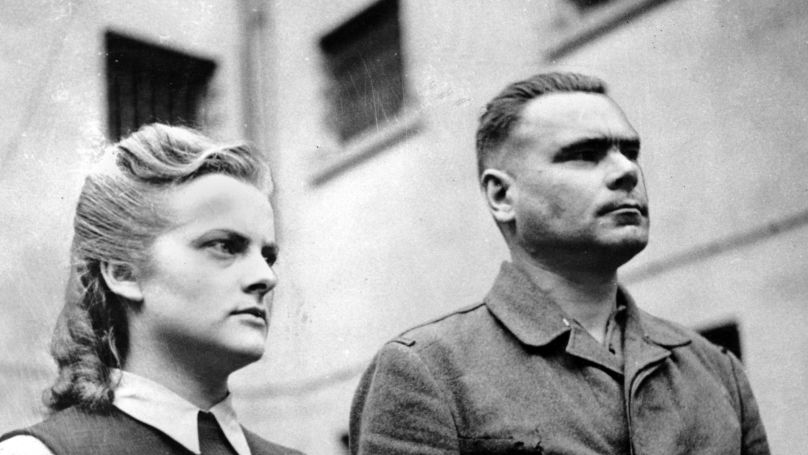
In his autobiography, Rudolf Höss tried to convince his descendants that he had a conscience. He had felt it even when he, as a true anti-Semite and disciplined campaigner, exterminated Jews. Here are his views on the "Jewish question":
“I was opposed to Der Stürmer - Streicher’s anti-Semitic weekly, because of the disgusting sensationalism with which it played on people’s basest instincts. Then, too, there was its perpetual and often savagely pornographic emphasis on sex. This paper caused a lot of mischief and, far from serving serious anti-Semitism, it did it a great deal of harm. I must emphasise here that I have never personally hated the Jews. It is true that I looked upon them as the enemies of our people. But just because of this I saw no difference between them and the other prisoners, and I treated them all in the same way. I never drew any distinctions. In any event, the emotion of hatred is foreign to my nature. But I know what hate is, and what it looks like. I have seen it and I have suffered it myself”.
Gustav Gilbert, an American military psychologist, who spoke with Höss in the Nuremberg prison, wasn’t impressed by these sentiments. “In all of the discussions Höss is quite matter-of-fact and apathetic, shows some belated interest in the enormity of his crime”, the psychologist noted in his diary, “but gives the impression that it never would have occurred to him if somebody hadn't asked him. There is too much apathy to leave any suggestion of remorse and even the prospect of hanging does not unduly distress him”.
Even when the compassionate Höss described the suffering of his victims, the protagonist of these plots was always himself and his mental anguish.
“From time to time women would suddenly give the most terrible shrieks while undressing, or pull their hair, or scream like maniacs. These were immediately led away behind the building and shot in the back of the neck with a small-calibre weapon. (...) I remember, too, a woman who tried to throw her children out of the gas chamber, just as the door was closing. Weeping, she called out: ‘At least let my precious children live’. (...) The smaller children usually cried because of the strangeness of being undressed in this fashion, but when their mothers or members of the Special Detachment comforted them, they became calm and entered the gas chambers, playing or joking with one another and carrying their toys.
(...)
There were many such shattering scenes, which affected all who witnessed them.
During the spring of 1942, hundreds of vigorous men and women walked entirely unsuspecting to their death in the gas chambers, under the blossom-laden fruit trees of the ‘cottage’ orchard. This picture of death in the midst of life remains with me to this day. (...) All of those detailed to do this monstrous ‘work’, this ‘service’, and who, like myself, have given sufficient thought to the matter, have been deeply marked by these events.
(...) During confidential conversations I was asked: is it necessary that we do all this? Is it necessary that hundreds of thousands of women and children be destroyed? And I, who in my innermost being had on countless occasions asked myself exactly this question, could only fob them off and attempt to console them by repeating that it was done on Hitler’s order. (...) In Auschwitz I truly had no reason to complain that I was bored.
If I was deeply affected by some incident, I found it impossible to go back to my home and my family. I would mount my horse and ride, until I had chased the terrible picture away. Often, at night, I would walk through the stables and seek relief among my beloved animals”.
Despite the monstrous indicators of Höss’ "efficiency", he wasn’t the one named as the cruellest commandant of Auschwitz: this was the last commandant, Richard Baer, who managed to worsen the already monstrous situation in the camp. (After the war, Baer went into hiding for 15 years near Hamburg, but then he was identified and died in prison after his arrest.)
Nevertheless, he wasn’t the one named as “the kindest commandant” either. This title was given to his successor, Arthur Liebehenschel. For what, you may ask. For sure, he was “solving the Jewish question” with the same enthusiasm as his predecessor. But he stopped encouraging “criminal” prisoners who terrorised “political” ones. Furthermore, he abolished the practice of shooting disabled people at the notorious “black wall”. He ordered to demolish "standing cells" – prisoners were punished with this torture for their misdeeds. He also abandoned a number of other monstrous inventions of his predecessor - Rudolf Höss the sentimental. Liebehenschel was hanged in Krakow in 1948.(Photo of Liebehenschel)
However, there was a man among Rudolf Höss' colleagues who could be put on the same level with him, although they never had a chance to serve together. This was Franz Ziereis, the long-serving commandant of Mauthausen.
When he was captured by the Americans, he admitted his guilt, just like Höss. But he did not give up: in May 1945, he received a bullet while trying to escape.
Both Höss and Ziereis headed the largest concentration camps. Both unquestioningly carried out any order from Himmler: they selected people and killed them, and sanctioned medical experiments. And they managed efficiently. Mauthausen was a camp complex with extensive industrial activities. Ziereis was such a successful manager that he was able to combine the post of commandant with two other positions: in particular, he led the famous granite quarry at Mauthausen.
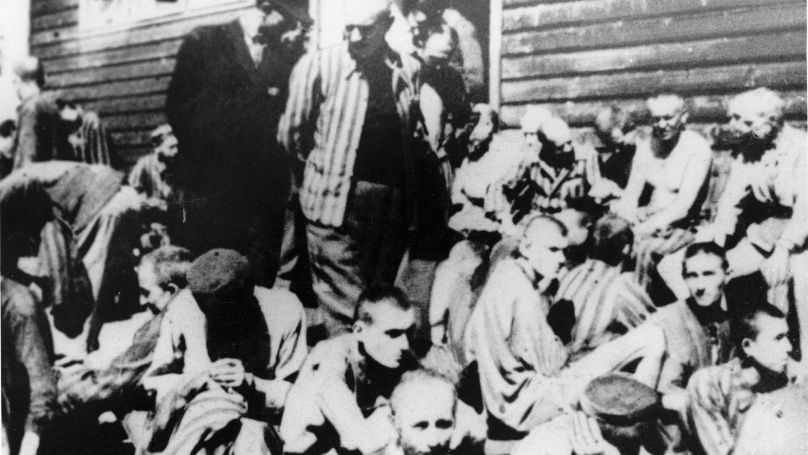
Likewise, Rudolf Höss was very passionate about economic issues. After all, the Reichsführer instructed him to create a concentration camp "from scratch" and "turnkey". And Höss did a brilliant job.
“The Inspectorate (...) was repeatedly inquiring when ever-larger groups of prisoners could be accepted at the camp. Yet I could still not lay my hands on a hundred yards of barbed wire”, Höss complained. “There were mountains of it in the Engineer Depot at Gleiwitz. But I could not touch it without first getting authority to have it decontrolled from the Senior Engineer Staff in Berlin. The Inspectorate of Concentration Camps refused to help in this matter. So the urgently needed barbed wire just had to be pilfered. Wherever I found old field fortifications, I ordered them to be dismantled and the pillboxes broken up, and thus I acquired the steel they contained. Whenever I came across installations containing material I urgently needed, I simply had it taken away at once without worrying about the formalities”.
Both commandants appreciated the deadly Zyklon B. Ziereis secured the delivery of this gas to his camp and personally filled the gas-filling device in the gas chamber with crystals. But in this matter, Höss distinguished himself even better. He became one of the discoverers of the Zyklon as a murder weapon. The Auschwitz commandant described the positive influence that this biocide had on his life and work.
“The Russians were ordered to undress in an anteroom; they then quietly entered the mortuary, for they had been told they were to be deloused. (...) The doors were then sealed and the gas shaken down through the holes in the roof. I do not know how long this killing took. For a little while a humming sound could be heard. When the powder was thrown in, there were cries of ‘Gas!’, then a great bellowing, and the trapped prisoners hurled themselves against both the doors. But the doors held. They were opened several hours later, so that the place could be aired out. It was then that I saw, for the first time, gassed bodies in a mass.
It made me feel uncomfortable and I shuddered, although I had imagined that death by gassing would be worse than it was. (...) The killing of these Russian prisoners of war did not cause me much concern at the time. The order had been given, and I had to carry it out. I must even admit that this gassing set my mind at rest, for the mass extermination of the Jews was to start soon and at that time neither Eichmann nor I was certain how these mass killings were to be carried out. It would be by gas, but we did not know which gas or how it was to be used. Now we had the gas, and we had established a procedure.
I always shuddered at the prospect of carrying out exterminations by shooting, when I thought of the vast numbers concerned, and of the women and children. The shooting of hostages, and the group executions ordered by the Reichsführer SS or by the Reich Security Head Office had been enough for me. I was therefore relieved to think that we were to be spared all these bloodbaths, and that the victims also would be spared suffering until their last moment came”.
Rudolf Höss tried to hide on a farm near Flensburg. But British military police identified him. Höss acted as a witness at the main and one of the minor Nuremberg trials. On 23 May 1946, he was handed over to the Polish government. On 2 April, the Supreme Tribunal of Poland sentenced him to death. Shortly before his death, Höss sent a letter to the prosecutor, in which he confessed his guilt once again and begged for pardon from the Polish people. On 16 April, Rudolf Höss was hanged in the heart of his creation: near the crematorium on the territory of the Auschwitz camp.
***
Col. Amen (Colonel John Harlan Amen prosecutor for the USA): “Another improvement we made over Treblinka was that we built our gas chamber to accommodate 2,000 people at one time, whereas at Treblinka their 10 gas chambers only accommodated 200 people each. (...) Children of tender years were invariably exterminated, since by reason of their youth they were unable to work. (...) Very frequently women would hide their children under their clothes, but of course when we found them we would send the children in to be exterminated. We were required to carry out these exterminations in secrecy, but of course the foul and nauseating stench from the continuous burning of bodies permeated the entire area and all of the people living in the surrounding communities knew that exterminations were going on at Auschwitz”. Is this all true and correct, Witness?
Höss: Yes
By Julia Ignatieva
